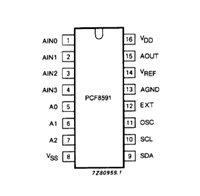Precautions
■ Recommended Soldering Method
1. Temperature Profile for Lead Solder (Measured at the PCB)
2. Temperature Profile for Lead-free Solder (Measured at the PCB)
Case top panel
(peak): 255°C max.
Soldering
250 max.
Soldering
220 to
245
230
180
180 to
200
Preheating
150
Preheating
150
Relay terminal
section
120 max.
30 max.
Time (s)
90 to 120
20 to 30
Time (s)
3. The thickness of cream solder to be applied should be between 200 and 250 μm and the land pattern should be based on Omron’s recommended
PCB pattern. To maintain the correct soldering joint shown in the following diagram, we recommend applying solder using the soldering conditions
shown above. Check the soldering in the actual mounting conditions prior to use.
Correct Soldering
Incorrect Soldering
Relay
Terminal
Land
PCB
Excessive amount
of solder
Insufficient amount
of solder
Heel fillet
is formed
Solder
■ Precautions for correct use
Be sure to read the precautions and information common to all Electromechanical Relays, contained in the Technical User's Guide, "Electrome-
chanical Relays, Technical Information, for correct use.
Relay Handling
Claw Securing Force During Automatic Mounting
Do not unpack the relay until ready to mount it. Use the relay as soon as
possible after opening the moisture-proof bag. Otherwise, the terminals
may tarnish and seal failure may occur after the solder process.
During automatic insertion of relays, make sure to set the securing
force of each claw to the following so that the relay’s characteristics
will be maintained.
When washing the product after soldering, use a water-based or
alcohol-based solvent. Keep the solvent temperature below 40°C.
Do not put the relay in a cold cleaning bath immediately after soldering.
C
Direction A: 1.96 N max.
Direction B: 4.90 N max.
Direction C: 1.96 N max.
B
Operating, Storage Environment
Secure the claws to the shaded area. Do not
attach them to the center of the relay or just
one part of the relay.
If the relay is stored for a long time in an adverse environment with high
temperature, high humidity, organic or sulfide gases, then sulfide or
oxide films will form on the contact surfaces. These films may result in
unstable contact, contact problems or function problems. Therefore,
operate, store or transport the product under specified environmental
conditions.
Maximum Allowable Voltage
The maximum allowable voltage of the coil can be obtained from the
coil temperature increase and the heat-resisting temperature of the
coil insulating sheath material. (Exceeding the heat-resisting tem-
perature may result in burning or short-circuiting.) The maximum
allowable voltage also involves important restrictions which include
the following;
1. Use in locations where the relay is not exposed to corrosive
gas such as hydrogen sulfide gas or salty air.
2. Use in locations where no visible dust exists.
3. Use, store and transport in locations where the product is not
exposed to direct sunlight, rain or snow.
4. Do not apply force to the product which may result in deformation
or change in quality of the product.
•
Must not cause thermal changes in or deterioration of the insulating
material, which may result in films developing on the contacts.
• Must not cause damage to other control devices.
• Must not cause any harmful effect on people.
• Must not cause fire.
Coating
The relay mounted on the PCB may be coated or washed, but do not
apply silicone coating or detergent containing silicone, otherwise, the
silicone coating or detergent may remain on the surface of the relay.
Therefore, be sure to use the maximum allowable voltage as specified in
the catalog. As a rule, the rated voltage must be applied to the coil. Con-
sider using a latching relay instead of a non-latching relay with a continu-
ous voltage applied to the coil.
Latching Relay Mounting
Long-term, Continuous ON contacts
Make sure that excess vibration or shock doesn’t set or reset the
relay during normal operation. The relay is shipped in the ‘reset’
position. Shock or vibration during shipping may require the application
of a reset signal, prior to operation.
Using the relay where it will remain continuously energized for long
periods of time can lead to unstable contacts. We recommend using
a latching relay for this type of application.
6
High Frequency Relay G6K-RF






 STM32F030C6芯片介绍:主要参数分析、引脚配置说明、功耗及封装
STM32F030C6芯片介绍:主要参数分析、引脚配置说明、功耗及封装

 PCF8591数据手册解读:参数、引脚说明
PCF8591数据手册解读:参数、引脚说明

 一文带你了解ss8050参数、引脚配置、应用指南
一文带你了解ss8050参数、引脚配置、应用指南

 深入解析AD7606高性能多通道模数转换器:资料手册参数分析
深入解析AD7606高性能多通道模数转换器:资料手册参数分析
